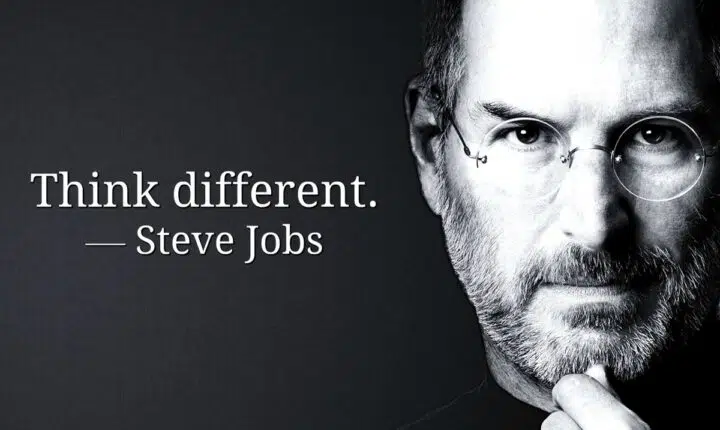Introduction to Smart Notes
Sönke Ahrens’s groundbreaking work completely disrupts traditional learning methods and invites readers to discover new ways of learning centred around the idea of taking smart notes because “One cannot think without writing.” There are few books you come across that have a lasting impact on your life; this is one of those books that will reorient you in an entirely optimal way armed with time-tested methods relied upon by the intellectual high performers for lifelong learning.
Ahrens questions the traditional top-down learning models at the very outset, where the idea is thrown upon first, and the reader is forced to reflect upon and develop that idea. Instead, he prescribes a bottom-up approach to learning where the ideas result from information in our knowledge systems; as a result, they are much more rich and organic. Keeping an open mind is at the core of this approach to avoid any confirmation biases in our learning models because, as Kahneman puts it, the mind is “a machine for jumping to conclusions”; therefore, our learning models need to counterbalance it actively.

The Technique of Smart Notes
Written Notes are at the heart of any learning process because we tend to think we understand what we read – until we try to rewrite it in our own words; good and productive writing results from good note-taking techniques. Writing and elaboration challenge our understanding of the content, deepening our understanding by connecting it to prior knowledge and trying to understand its broader implications. The author suggests taking the following types of written notes to enhance our learning:
Fleeting Notes:
These notes should be used to capture every idea that comes to our mind. They should serve as reminders of our thoughts and ideas. We must transfer them to our inbox so that they can be processed later. Once processed, they should be deleted within a day or two. The only utility of these notes is that they can be turned into proper notes to use later if they are reviewed timely.
Literature Notes:
We should take literature notes while reading or consuming any content. These notes should be about the key points we want to remember and may use in our writing or thinking. They should be short and precise. We should avoid using quotes and write in our own words to increase our understanding of the content. We should keep these notes along with bibliographic details in the reference system.
Permanent Notes:
To make permanent notes, combine the two types of notes discussed above, writing one for each idea. These notes aid research, interests, and thinking, aiming to develop ideas, arguments, and discussions. Write in complete sentences, cite sources, stay precise, clear, and brief. Ensure future understanding even without context. Store these notes in the permanent slip-box and interlink related notes for easy navigation and exploration.
Project Notes:
These notes are only relevant to a particular project. They should be kept within a project-specific folder and can be discarded or archived after the project is finished.
The only notes that should be permanently stored are the literature notes in the reference system and the main notes in the Slip-Box.

The Framework (Zettelkasten/Slip-Box Note-Taking) for Smart Notes
A good structure can help us avoid the burden of storing knowledge and information in our brains, allowing us to use our mental capacity to focus on generating new ideas and analysing content. We need a reliable external structure to keep track of the information overload and combine different concepts. Experts like Richard Feynman and Benjamin Franklin agree on the benefits of externalising ideas by writing them down.
A good workflow can create a virtuous circle, where a positive experience motivates us to take on the next task easily, helping us improve our skills and enjoy the work even more. A learning system that enables feedback loops is also crucial.
The core idea of the Slip-Box is to focus on the essentials and avoid unnecessary complications. We only write things down if it helps us to think more clearly, not to bridge gaps in a note sequence. It’s not just the Slip-Box or our brains alone, but the dynamic between them that makes working with it so productive. The Slip-Box is not meant to be a complete encyclopedia but a thinking tool.
Good tools don’t add more features and options but rather help minimise distractions and focus on the main work, thinking. We need to have the right tools and know how to use them.
We should start from the bottom up within the system to develop our ideas, arguments, discussions, and topics. By doing everything as if nothing counts other than writing, we can improve our reading, thinking, and other intellectual skills.
Interesting Concepts
Throughout the book, Ahrens touches upon various important supporting concepts to further our understanding and refine our processes.
- Zeigarnik Effect & GTD: As unfinished tasks clutter short-term memory, Ahrens highlights the importance of task management through standardised task processing via Getting Things Done (GTD), enhancing focus.
- Avoiding multitasking: He further explains that multitasking reduces productivity and emphasises focused, meaningful tasks.
- Mere-Exposure Effect: Emphasising the importance of distinguishing familiarity from actual skill, as frequent exposure doesn’t always indicate mastery.
- Dunning-Kruger Effect & Imposter Syndrome: Discussing overconfidence due to limited knowledge and self-doubt despite vast knowledge.
- Ahrens emphasises expertise over planning, underlining the significance of learning through experience and intuition.
- Will Power & Decision-Making: Acknowledging willpower as a finite resource, Ahrens suggests structured environments to reduce decision fatigue, empowering streamlined decision-making.
Conclusion
The techniques given in the book can be implemented for any learning activity and content consumption by developing an external system for storing information with a bottom-up learning model. When applied over time, these techniques can significantly improve our understanding of essential ideas/concepts and improve our writing by making it rich and organic. “How to Take Smart Notes” isn’t just a book; it’s a transformative guide that has fundamentally altered my approach to absorbing knowledge by adopting these methodologies.
My Rating:- ★ ★ ★ ★ ★
Reviewed on:
- e-book
- Total pages: 171
- Genre: Non Fiction/Productivity
- How To Make Smart Notes: Sönke Ahrens




[…] concept of the brain as “a machine for jumping to conclusions,” which is discussed in How to Take Smart Notes by Sönke Ahrens), which constantly looks out for cues in the subject’s environment. He further highlights how […]